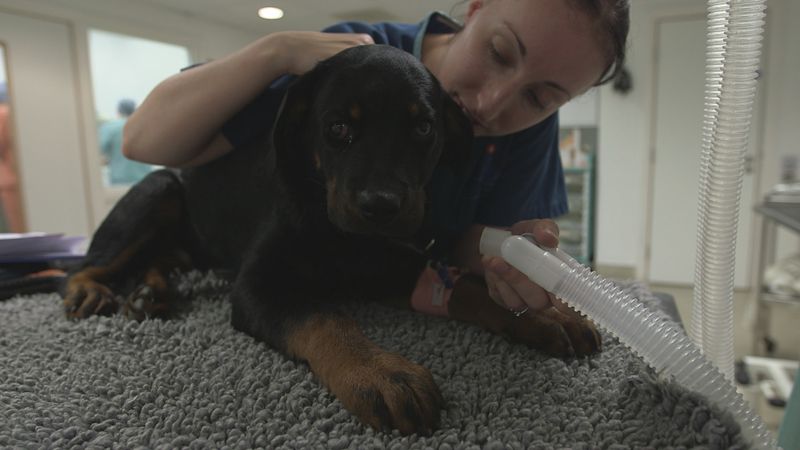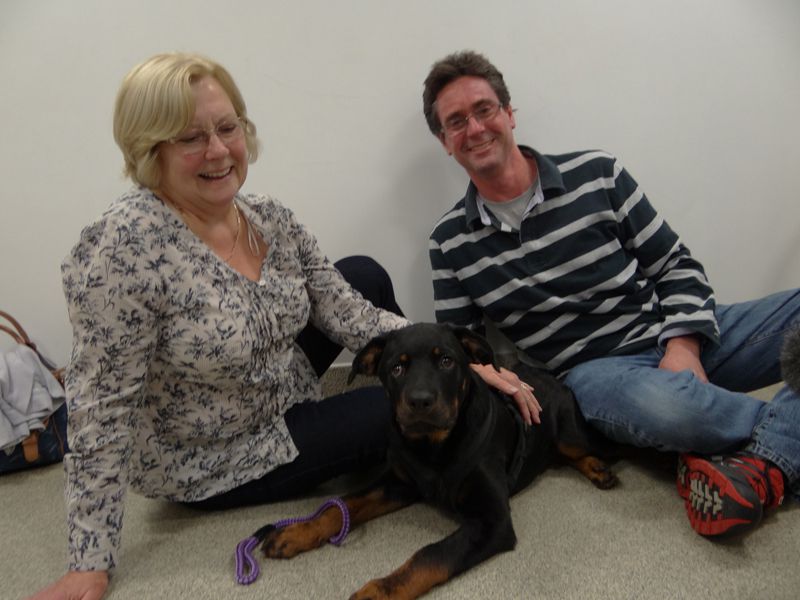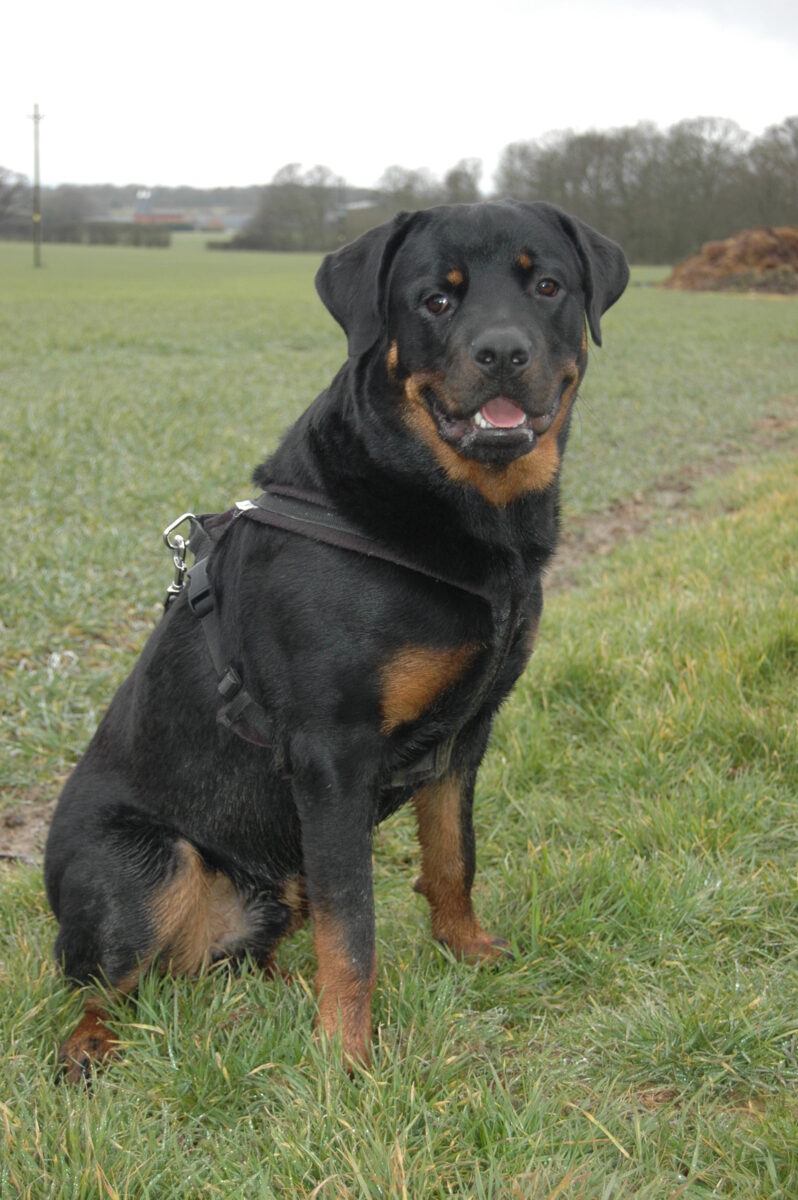Elvis
In 2014 Noel met a puppy who had a particularly difficult start in life. Rottweiler puppy Elvis was found wandering the streets as a six-week-old stray with a fractured cheekbone and eye socket. He was rescued by the RSPCA and adopted by Jane and Simon who subsequently discovered a problem with his back legs. He was becoming progressively paralysed by abnormal growth of bone affecting his spinal vertebrae. Noel suspected the injury was potentially caused by the mistreatment Elvis suffered in the past.
He underwent an urgent operation to remove the damaged bone compressing his spinal cord and the vertebrae were then stabilised using a unique spinal implant system which Noel had developed (Spinal Fitzateur). “The fact that you came in today rather than in three weeks’ time is the salvation of this dog. If you didn’t love him as much as you do, he could be paralysed,” Noel tells the couple. Elvis’ journey was a heart-breaking roller coaster of emotions, but six years later Jane and Simon have no regrets.
Their Story
Elvis, a handsome three-month-old Rottweiler puppy had been adopted by Simon and Jane at just 6 weeks of age. Elvis did not have a great start in life and his physical problems are thought to have been the result of being mistreated. Despite the early traumas in life, Elvis was a regular bouncy puppy who adored his wider Rottie family too.
The Problem
Only a few days after arriving home Jane and Simon began to notice that Elvis was standing with a hunched back and had difficulty walking normally. He was brought to Fitzpatrick Referrals for further investigation.
Elvis and his family met with Noel, and poor Elvis was clearly very wobbly on both his back legs and clinical examination revealed neurological deficits consistent with spinal disease. Elvis was admitted to the hospital for an MRI scan of his spine to try and pinpoint the cause of Elvis’s problems.
The MRI scan revealed a large bony protuberance causing severe compression of the spinal cord at the level of the 12th and 13th thoracic vertebrae. Also, Elvis’s intervertebral disc between the 4th and 5th lumbar vertebrae was compressed providing no shock-absorbing ability in this area of the spine. Elvis’s situation was getting worse and he was clearly in a great deal of pain.
Treatment
Simon and Jane had extended discussions with Noel and after a lot of deliberation, they decided to operate and give Elvis the very best chance to lead a healthy and happy pain-free life.
A surgery called a complete dorsal laminectomy was performed at the level of the 12th and 13th thoracic vertebrae to decompress the spinal cord. Elvis’s spine then had to be stabilised using an internal spinal fixation system developed and designed by Noel called the Fitzateur. The Fitzateur uses screws on either side of the affected vertebral bodies, and the screws are linked with clamps and rods across the top to provide stability. It is a complex procedure but x-rays and CT scan at the end of surgery revealed satisfactory positioning of the implants and stability of the spine.
Following surgery Elvis was cared for by our patient care team, duty intern and of course Noel kept a watchful eye. The most important concerns for the patient care team was to ensure Elvis received adequate pain-killer to keep him comfortable, ate some food, remained hydrated by continuing his intravenous fluid therapy and rested well.
Elvis did really well for seventy-two hours and was beginning to recover voluntary motion of his pelvic limbs. However he then suddenly deteriorated, the cause of which was unknown. Noel had a long discussion with Simon and Jane with regard to what to do best for him. Everyone was naturally concerned about the moral implications of putting him through multiple surgeries with a guarded prognosis, but everyone was confident that full recovery was still possible.
We repeated surgical intervention and we found that soft tissue scar had again begun to form around the spinal cord and this was compressing the spinal cord. The scar tissue was resected and a titanium mesh was placed around the spinal cord to try and prevent the formation of further scar tissue.
Outcome
Careful aftercare was planned and Elvis remained in Fitzpatrick Referrals care for careful management and monitoring. A rehabilitation program was devised to start building up his strength, and following a few weeks of intensive rehabilitation, he was able to go home with a physio plan and regular visits to our hydrotherapy service.
Everyday Elvis is getting stronger and he is a very happy dog, and when Elvis returned to see Noel was even eager to run around! Noel was delighted to say that Elvis could return to full off lead activity, this was a wonderful result and it has been a complete honour to serve him and his wonderful family.







